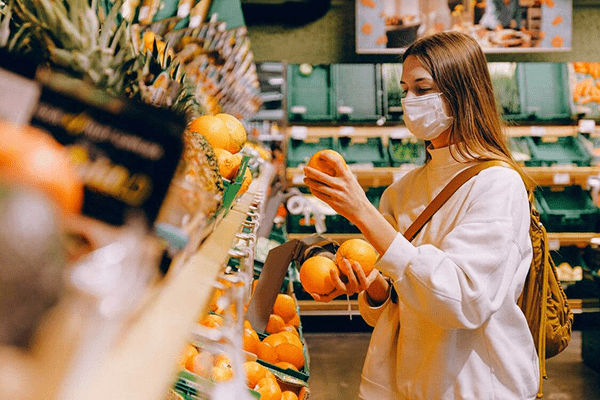NEWS ANALYSIS
The coronavirus pandemic has disrupted our lives, forcing us to lives in ways we never thought imaginable. At the heart of our pandemic lives is how we feed ourselves and what that entails. We are spending more time in grocery stores because eating out is off the table, for now. But the experience of grocery shopping has been altered by fears, necessity, uncertainty and frequency.
Here are some findings on how consumers feel about grocery shopping from C + R Research, which polled 2,012 consumers about grocery shopping. The study specifically asked consumer about their shopping habits, budgets, experiences and diets. Here’s what it found:
Make It Fast & Early
According to respondents, 60 percent are fearful to shop at a grocery store and 73 percent are shopping less frequently at physical grocery stores. When shoppers do travel to a store, they’re opting to get their shopping done early. In fact, 40 percent of respondents said they shop for groceries in the morning while only 17 percent shop in the evening.
They’re also stocking up on items as 46 percent said the pandemic has led them to buy items in bulk. It’s interesting to note that even though many respondents say they buy in bulk, 89 percent believe limits should be placed on items.
Brand loyalty has taken a backseat. Overall, 76 percent said they do not go out of their way to find their favorite brands. And when it comes to comparison shopping, people are basically split on looking for deals (48 percent) and buying “whatever is available” (52 percent).
More than 50 percent of consumers have witnessed price gouging and 48 percent report paying more for certain items.
Forking Over More
Nearly half of consumers say they are paying more for items (48 percent). Among those who have changed their eating habits, 47 percent are eating more processed foods; 36 percent are eating less produce; and 26 percent are eating less meat or poultry.
Delivery Services Will Benefit Beyond Pandemic
With consumers making fewer trips to physical grocery stores, their use of delivery services has increased. Some 44 percent said they are using more restaurant, meal-kit or grocery delivery services and apps. Among grocery delivery apps, the most popular are Amazon Fresh (31 percent), Walmart Delivery (25 percent) and Instacart (24 percent). Considering the convenience factor, 27 percent of respondents said they plan to continue to use grocery delivery apps once the pandemic is over and life returns to a state of normalcy.
Shopping Jitters
Not only has the COVID-19 pandemic impacted shopping habits, but it also has caused other psychological effects on consumers. According to respondents, 60 percent feel a sense of panic or anxiety when they shop. So, are stores doing enough to ease the minds of consumers when they shop? More than one-third of shoppers (35 percent) said more should be done to protect consumers from COVID-19, and 50 percent said grocery stores need to do more to properly protect their employees.
At A Glance
- 60% of American shoppers are now fearful to shop at a grocery store and 73% are shopping less at physical grocery stores.
- Grocery delivery has increased 3.5x during Covid-19 where in-store shopping has decreased dramatically. Consumers on average took 2.3 weekly trips to the grocery store before COVID-19 and now average only 1 trip per week.
- 88% of consumers are unable to find certain items they normally buy and 89% believe stores should place limits on items.
- Average weekly grocery spend before COVID-19: $159, Average weekly grocery spend since COVID-19: $184.
- 50% of consumers have witnessed price gouging and 48% report paying more for certain items.













